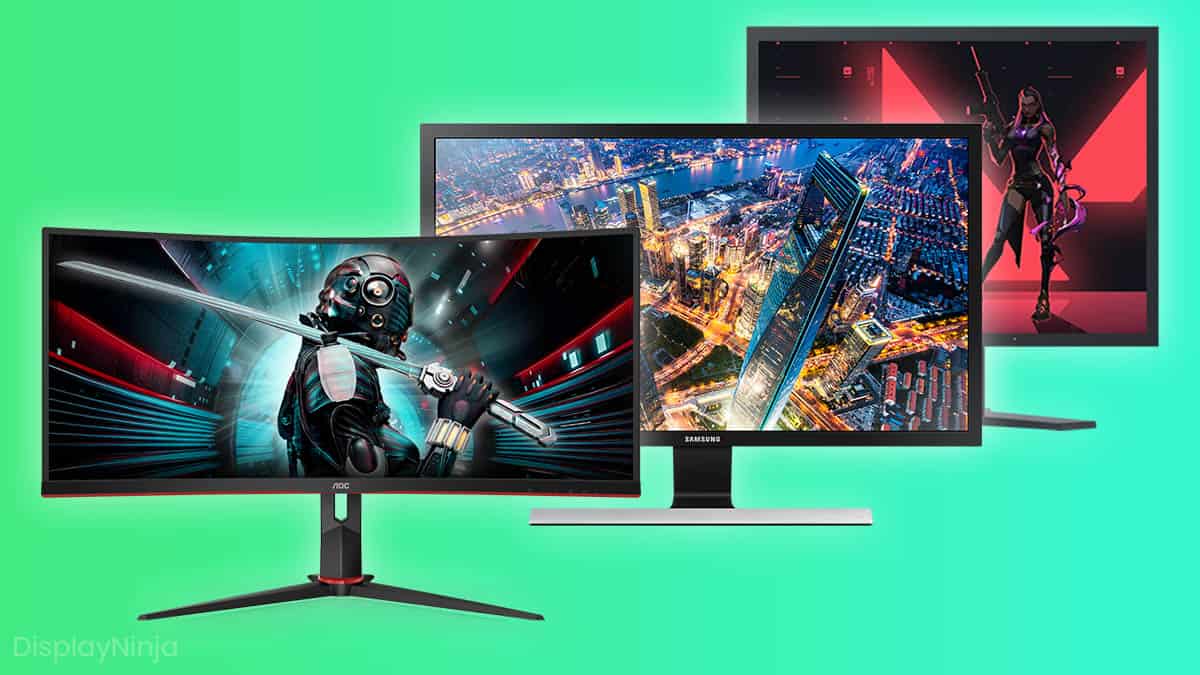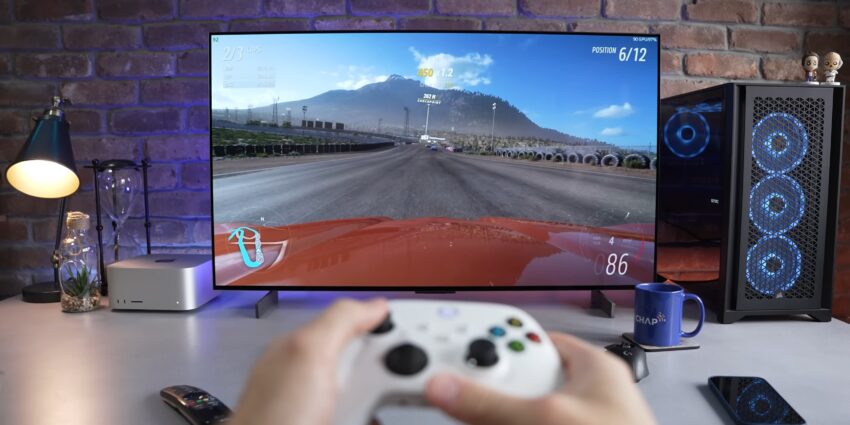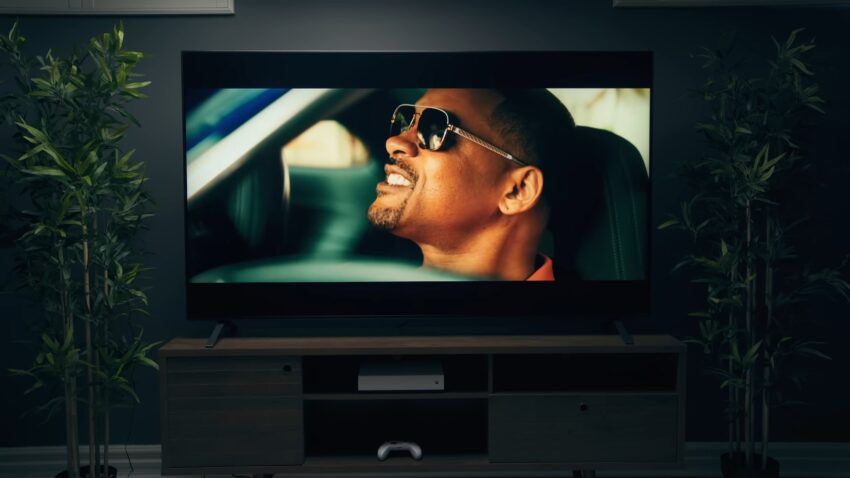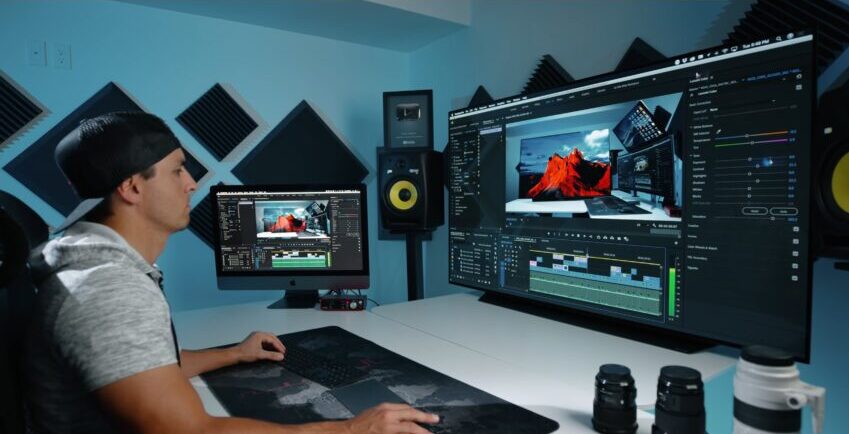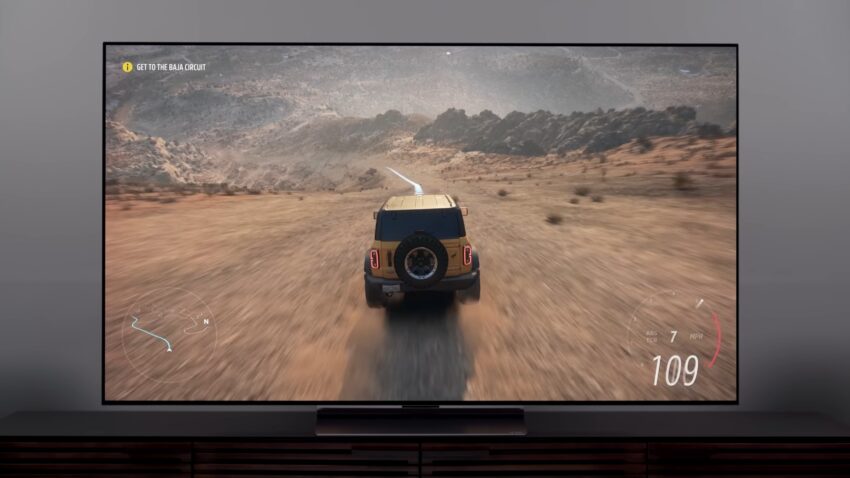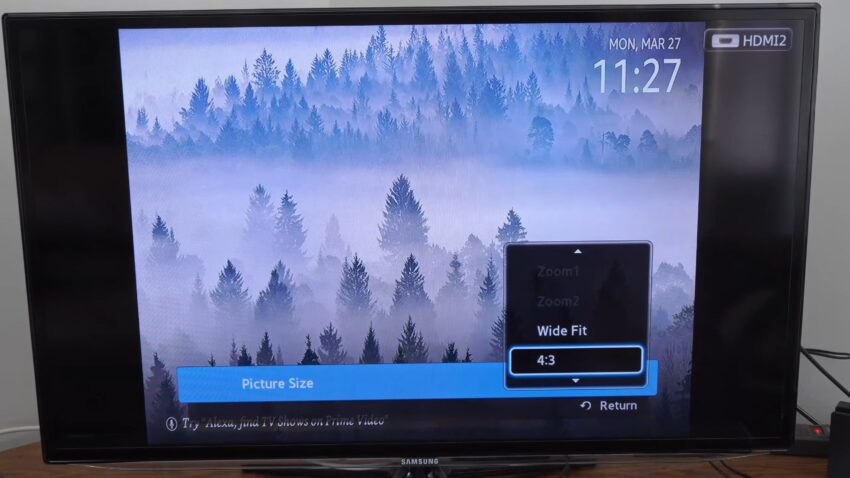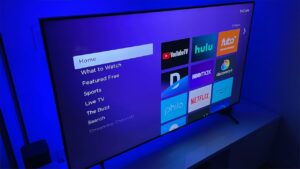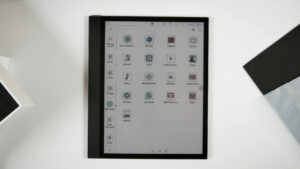In the world of displays, the aspect ratio is a critical factor that can influence your viewing experience. When discussing 80-inch displays, 16×10 and 4×3 are prominent contenders. But how do these distinct aspect ratios stack up against each other? Let’s embark on an exploration to explain the virtues and drawbacks of each!
The Basics
Aspect ratio is pivotal in shaping user experience, affecting the display’s width and height and, consequently, its presentation of content. Here, we shall unravel the essence of the 16×10 and 4×3 aspect ratios in 80-inch displays, elucidating their unique attributes and implications on visual content.
What is the Aspect Ratio?
The aspect ratio delineates the proportional relationship between the width and height of an image or screen. It’s expressed as two numbers separated by a colon, symbolizing width and height respectively. Grasping this concept is essential to comprehend the differences between various display types.
- An 80-inch 16×10 display typically has a resolution of 1280×800 pixels, yielding sharper and crisper visuals, suitable for multimedia consumption.
- In contrast, an 80-inch 4×3 display, generally with a 1024×768 pixel resolution, offers a square view, making it optimal for reading and document-oriented tasks.
Importance in Display Technology
Aspect ratio is paramount in display technology, governing the way content is portrayed on a screen. It affects the field of view and impacts how immersive or comfortable the viewing experience is, depending on the use-case scenario.
- Multimedia aficionados might favor the 16×10 aspect ratio for its widescreen format, ideal for movies and games.
- Conversely, those who primarily deal with texts, documents, or images might lean towards the 4×3 aspect ratio due to its balanced and symmetrical display.
The 16×10 Display
The 16×10 display, with its widescreen format, is a darling of multimedia enthusiasts and professional creatives. Here, we will delve deeper into its nuances, advantages, and potential drawbacks, providing insights to help you ascertain whether it’s the right choice for your needs.
Advantages of 16×10
The 16×10 display offers a plethora of advantages, especially in the realm of multimedia and professional applications, elevating the viewing experience to new heights.
Enhanced Field of View
- It provides a broader perspective, beneficial for gaming and video playback, allowing users to perceive more of their virtual environment.
- Creative professionals such as graphic designers and video editors gain from the additional screen real estate, facilitating multitasking and improving productivity.
Optimized for Modern Content
- The majority of contemporary movies and online videos are produced in widescreen formats, making 16×10 displays ideal for consuming such content without the black bars at the top and bottom.
- Web browsing and reading are also enhanced due to the additional horizontal space, allowing more content to be visible simultaneously.
Drawbacks of 16×10
While the 16×10 display is remarkable, it does have its set of shortcomings, primarily when utilized for specific tasks or content types.
Possible Distortion or Cropping:
- When displaying content not tailored for widescreen, users might encounter distortions or have to deal with cropping, potentially losing vital visual information.
- This becomes evident particularly with older video content or certain games that are optimized for square aspect ratios.
Not Ideal for Portrait Mode:
- Using 16×10 displays in portrait mode can be cumbersome due to the elongated vertical view, making it less suitable for reading e-books or lengthy web articles.
- Those who prefer reading on their devices might find the 4×3 aspect ratio more accommodating in this regard.
The 4×3 Display
The 4×3 display, reminiscent of classic television sets, is revered for its balanced and versatile view. Let’s scrutinize its merits and limitations, enlightening readers on its suitability for varied applications.
Benefits of 4×3
The 4×3 display stands out for its balanced proportions, offering a versatile viewing experience advantageous for a range of applications.
Optimal for Reading and Documentation
- Its balanced proportions make it excellent for reading e-books, working on documents, or browsing websites, reducing the need for excessive scrolling.
- Users dealing predominantly with text or static images might find the 4×3 display more user-friendly and less straining on the eyes.
Enhanced Compatibility
- A myriad of classic movies, games, and older content are designed with the 4×3 aspect ratio in mind, ensuring seamless and accurate display without unintended cropping or distortion.
- This can be particularly appreciated by retro gaming aficionados or those who enjoy classic cinema, providing an authentic and unaltered viewing experience.
Limitations of 4×3
The 4×3 display, while versatile, has its challenges, particularly when interfacing with modern multimedia content designed for widescreen displays.
Black Bars on Widescreen Content
- When viewing widescreen content on a 4×3 display, black bars (letterboxing) appear at the top and bottom of the screen, reducing the actual viewing area and impacting the immersive experience.
- This could be detrimental for users who consume a lot of modern movies, TV shows, or online videos, making the content appear cramped and less engaging.
Reduced Horizontal Space
- The reduced horizontal space can be a constraint for multitasking or using applications with multiple panels or toolbars, necessitating more scrolling or switching between windows.
- For users who value efficiency in professional applications or desire expansive views in gaming or video playback, the 16×10 display might be more fitting.
Practical Applications
Examining the practical applications of 16×10 and 4×3 displays unveils their adaptability and usability in real-world scenarios. These insights can be instrumental in aiding users to align their choice of display with their needs and preferences.
16×10 Display in Everyday Use
In everyday use, the 16×10 display manifests its proficiency predominantly in multimedia consumption and creative endeavors, catering to a wide array of users and preferences.
Multimedia Consumption
- Users are afforded an expansive view when watching movies or playing games, minimizing distractions and augmenting immersion.
- The elongated horizontal view also lets users watch videos comfortably in landscape mode, maximizing the visual experience.
Professional Applications
- Graphic designers and video editors find the additional screen real estate invaluable, enabling them to view more of their projects and access tools with ease.
- Multitaskers can also benefit by having multiple windows open side by side, enhancing productivity and workflow efficiency.
4×3 Display in Everyday Use
The 4×3 display shines in its versatility, making it a suitable companion for reading, browsing, and consuming classic content, offering a balanced and proportional view.
Reading and Browsing
- The symmetrical proportions of a 4×3 display reduce the amount of scrolling needed when reading or browsing, providing a comfortable and eye-friendly experience.
- This aspect ratio is particularly beneficial for users who consume a lot of text-based content, such as e-books and articles, presenting text in a more balanced manner.
Consumption of Classic Content
- The authentic and unaltered display of classic movies and games is a joy for enthusiasts, offering nostalgia and preserving artistic integrity.
- This display offers a true-to-source viewing experience, allowing users to experience content as it was originally intended, without distortions or cropping.
User Experience and Preferences
The battle between the 16×10 and 4×3 displays extends into the realm of user experience and preferences. Understanding how each display aligns with different user needs and inclinations is crucial for making an informed choice.
User Adaptation to 16×10 Display
Adapting to the 16×10 display can be a breeze for users who prioritize multimedia consumption and require expansive views for their creative or professional endeavors.
Enhanced User Engagement
- The widescreen format enhances user engagement when watching movies or playing games by providing a more panoramic view.
- For creative professionals, the extra horizontal space can facilitate tool access and project overview, reducing the need to constantly switch between windows or panels.
Learning Curve
- For users accustomed to more traditional, square displays, there might be a slight learning curve as they adapt to the wider format.
- However, the benefits of enhanced immersion and additional screen real estate can quickly outweigh the initial unfamiliarity, especially for multimedia enthusiasts and professionals.
User Adaptation to 4×3 Display
Users who prefer a more balanced view and consume a substantial amount of text-based content might find the adaptation to the 4×3 display to be more intuitive and rewarding.
Comfort and Balance
- The proportional balance of the 4×3 display offers comfort for extensive reading sessions and provides a harmonious view when browsing or working on documents.
- This can reduce eye strain and enhance the overall user experience, particularly for avid readers and those who work extensively with text-based content.
Compatibility with Classic Content
- For enthusiasts of classic content, adapting to a 4×3 display is almost second nature, as it presents content in its original and unaltered form.
- The authentic experience provided by this display is unparalleled for enjoying classic movies and games, making it a preferred choice for purists and aficionados.
FAQs
Can I use both 16×10 and 4×3 displays for professional graphic design?
Absolutely. Both aspect ratios can be used for professional graphic design, but they serve different needs. A 16×10 variation provides more horizontal space, which is ideal for timelines in video editing or having multiple tools open in graphic design software.
A 4×3 variation offers a more balanced workspace, suitable for designers who prefer a square canvas or work primarily on portrait-oriented projects.
Is one of the displays superior in terms of color accuracy and reproduction?
Color accuracy and reproduction are not inherently dependent on the aspect ratio but rather on the quality of the display panel, its technology (like IPS, OLED), and calibration.
Both 16×10 and 4×3 displays can have excellent color accuracy and reproduction if they are of high quality and properly calibrated.
How does the choice of aspect ratio affect battery life on portable devices?
The aspect ratio itself does not directly impact battery life; however, the resolution, brightness, and technology do. Higher resolutions and brightness levels generally consume more power, and technologies like OLED are typically more energy-efficient than LCD.
When choosing a display, consider these factors along with the aspect ratio to optimize battery life.
Does the content creation industry favor a particular aspect ratio?
The content creation industry tends to favor widescreen aspect ratios like 16×10 and 16×9 due to their compatibility with modern cinematic and multimedia content.
Widescreen formats are preferred for movie production, video games, and online video content, aligning with the current consumption trends and offering more immersive experiences to the audience.
For gaming purposes, which display is preferable?
It largely depends on the types of games you play and your personal preference. For modern games that support widescreen resolutions, a 16×10 variation can offer a more immersive and expansive gaming experience.
However, if you enjoy retro games or games that are designed for square screens, a 4×3 display can provide a more authentic and proportionate view.
Can I use a 4×3 display for watching modern movies and TV shows without any issues?
While you can watch modern movies and TV shows on a 4×3 display, you may encounter letterboxing (black bars at the top and bottom of the screen) due to the mismatch between the widescreen format of most modern content and the squarer 4×3 aspect ratio.
This may not hinder the viewing experience for some users, but those who prefer a fully immersive viewing experience may find a 16×10 display more suitable.
Final Words
Choosing between an 80-inch 16×10 and an 80-inch 4×3 display hinges profoundly on individual needs and preferences. For lovers of modern multimedia content and widescreen cinematic experiences, the 16×10 variation is a worthy companion.
However, if balanced proportions, classic content consumption, and reading are your priorities, the 4×3 display might just be your ideal match. Remember, the ideal display is not about the latest trends or the highest specifications but about what aligns seamlessly with your lifestyle, preferences, and usage patterns. By weighing the merits and limitations of each aspect ratio, you can make an informed decision that enhances your interaction with the digital world.
Related Posts:
- 10.5 Inch 5x3 Display vs 11 Inch 16x10 Display -…
- Can You Put a Regular TV Outside? - Exploring the…
- Samsung RU8000 TV 2024 - Exploring the Stunning Visuals
- 80 Inch 16x9 Display vs 100 Inch 16x9 Display -…
- 42 Inch 16x9 Display vs 50 Inch 16x9 Display -…
- 65 Inch 16x9 Display vs 85 Inch 16x9 Display - The…


